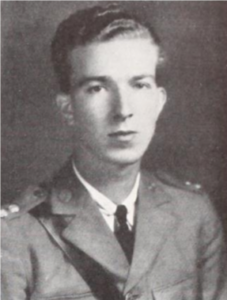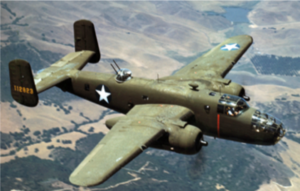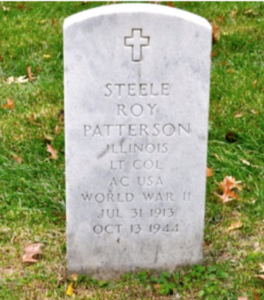Scroll of Honor – Steele Roy Patterson
After the Battle
Written by: Kelly Durham
Steele Roy Patterson of Seneca was a busy cadet, engaged in  a variety of pursuits. He was a cadet first lieutenant his senior year, assigned to Company L in 3rd Battalion. He had completed ROTC Camp that summer along with many of the other boys from his class and was back on campus juggling his electrical engineering studies with a full complement of extracurricular activities including his military duties.
a variety of pursuits. He was a cadet first lieutenant his senior year, assigned to Company L in 3rd Battalion. He had completed ROTC Camp that summer along with many of the other boys from his class and was back on campus juggling his electrical engineering studies with a full complement of extracurricular activities including his military duties.
Patterson was a member of the Central Dance Association which planned all the big hops for the cadets and their dates, many of whom traveled to the tiny community and stayed with faculty families for dance weekends. He was a member of the American Institute of Electrical Engineers, Tiger Brotherhood, Sigma Epsilon social fraternity, and a reporter for The Tiger. He must have been well-respected by his classmates, for they had elected Patterson to represent them on the Senior Council, the class’s governing body.
Patterson graduated in the spring of 1934 and was commissioned as a second lieutenant in the Infantry. That same year, he put in a transfer for the Army Air Corps. Promotions, at first, were slow, reflecting the pace of America’s peacetime Army of the era. Patterson was promoted to first lieutenant in September 1940. Then things began to happen more quickly. As Americans and their political leaders awakened to the dangers of the war in Europe, the country began to build its military forces, implementing a draft and expanding training regimens and facilities. In October 1941, Patterson was promoted to captain. Mobilization accelerated after the attack on Pearl Harbor and on March 1, 1942, Patterson was promoted again, this time to major.
Patterson soon shipped overseas, possibly in support of Operation Torch, the November 1942 invasion of North Africa by Allied forces. He flew numerous missions in the Middle East and Egypt according to a newspaper report.
In April 1943, Patterson returned to the States,  was promoted to lieutenant colonel and named commander of the 465th Squadron of the 415th Bombardment Group. The 465th’s mission was to train pilots and aircrew for the costly daylight bombing campaign underway against Nazi-occupied Europe.
was promoted to lieutenant colonel and named commander of the 465th Squadron of the 415th Bombardment Group. The 465th’s mission was to train pilots and aircrew for the costly daylight bombing campaign underway against Nazi-occupied Europe.
On October 6, 1944, Lt. Col. Patterson was assigned as the copilot of a B-25 medium bomber piloted by Lt. Col. Horace Craig. During their preflight checks, both Craig and Patterson reported satisfactory conditions. The flight took off from the Army airfield at Orlando, Florida. When the aircraft’s speed surpassed seventy miles per hour, the nose wheel became airborne. According to the official accident report, the airplane’s left engine then lost power causing the plane to yaw to the left. The plane continued to climb, but Craig was only able to straighten its flight path with extreme effort. He guided the plane into two trees in an attempt to dissipate its momentum. The aircraft crashed and began to burn. Craig, Patterson and their three crew members managed to escape through a hole in the roof of the fuselage, but all were suffering from burns, cuts, and abrasions.
Patterson’s injuries proved fatal. He died on October 13.
Lieutenant Colonel Steele Roy Patterson was buried at Arlington National  Cemetery and was survived by his wife and two daughters, his parents, three brothers and two sisters.
Cemetery and was survived by his wife and two daughters, his parents, three brothers and two sisters.
For more information about Lieutenant Colonel Steele Roy Patterson, see:
http://soh.alumni.clemson.edu/scroll/steele-roy-patterson/
For additional information about Clemson University’s Scroll of Honor see:
